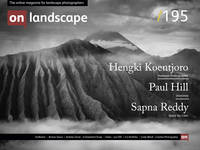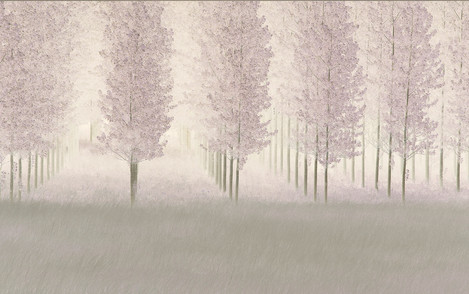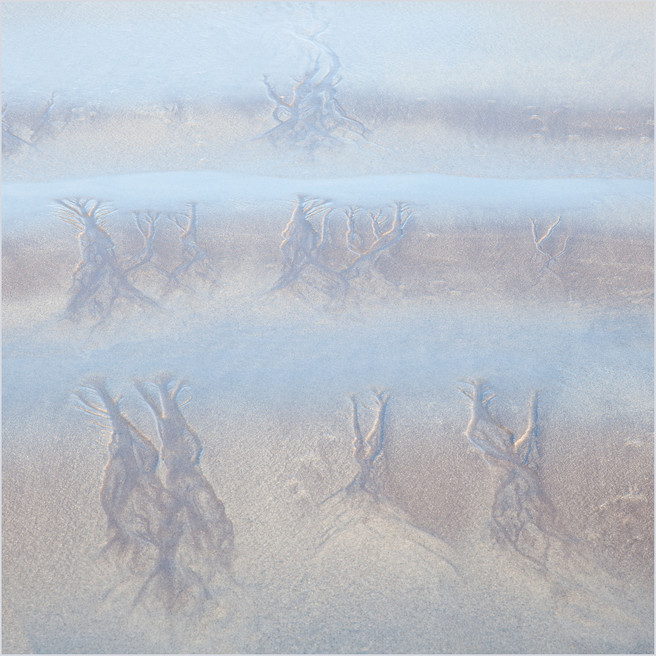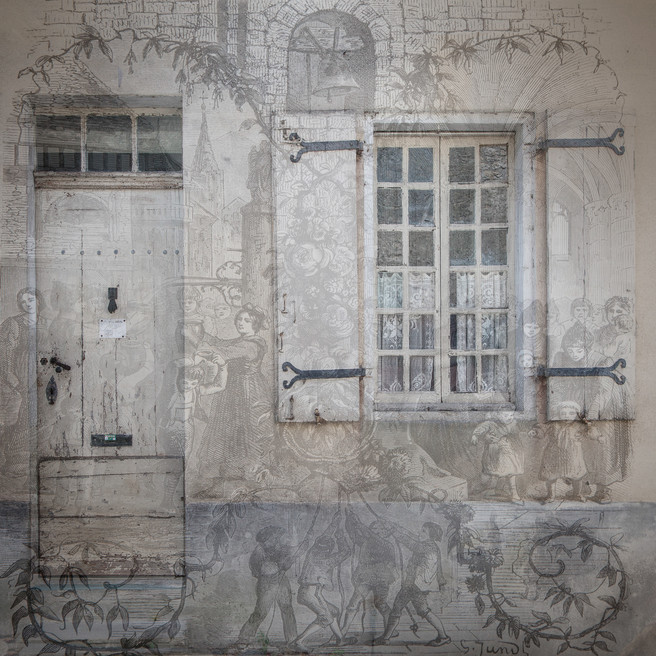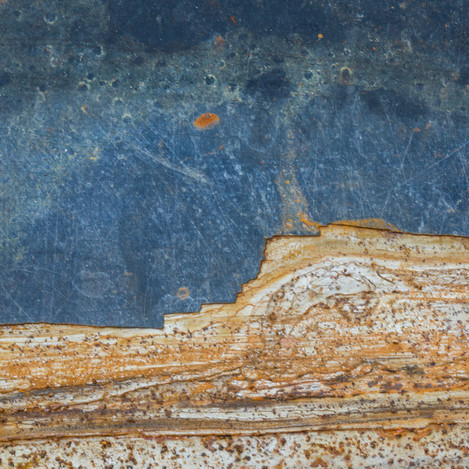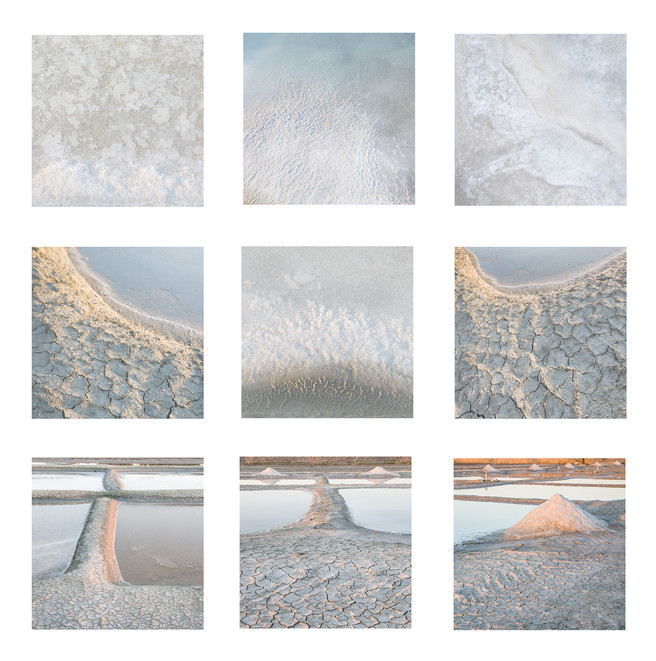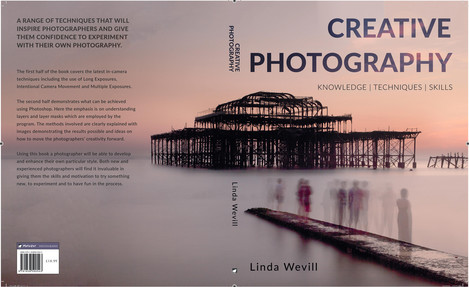Expressing ourselves through our image making

Linda Wevill
Linda is a creative photographer specializing in the landscape. Her aim is to achieve a soft painterly effect in her work and to capture the essence of a place. She wants to express a personal depiction of her environment, looking beyond the obvious, to capture the atmosphere of the scene and the vision she is trying to convey. Linda is a Fellow of the Royal Photographic Society and has exhibited widely.

Charlotte Parkin
Head of Marketing & Sub Editor for On Landscape. Dabble in digital photography, open water swimmer, cooking buff & yogi.
Back in 2015 when we talked to Linda last, she had started to explore making images using creative photography, as a means of a personal depiction of the landscape. Since then, Linda has delved deeper into in camera and in Photoshop techniques and in this interview talks about her new book and her journey into looking beyond the obvious, to capture the atmosphere of the scene.
It's been four years since we last spoke (Featured Photographer interview July 2015), so tell us what you have been doing photographically over this period?
I am still passionate about photography and look out for images wherever I go. I have been spending quite a bit of time in France over the last few years and this is reflected in my photos of the French countryside, where I have been concentrating on trees in the mist as well as taking photos of the historic buildings in the medieval villages there. I really enjoy taking atmospheric landscape/seascape shots and also experimenting with my photography, both in-camera and in Photoshop, where I get great satisfaction on seeing the effect that can be achieved.
When we spoke to you in 2015 you had just been awarded your FRPS by the RPS. How has this influenced your photography?
Gaining my FRPS has influenced my photography in several ways. I now prefer to work on a project and to get involved with the subject matter, rather than thinking in terms of individual images. I also now look around for details in a scene rather than just the wide view. My F panel was created with marine subjects with a rough sea image used as an overlay. I had to really scout around to find the variety required for this panel, keeping my eyes open every time I went near a harbour or pontoon. During this process, I learnt a lot about how to arrange images into a panel, and I now really enjoy arranging images in sets, either triptychs or larger groupings. This works especially with the more intimate landscape and detail shots. The images shown here in my Salt Flats panel are an example of this and I feel they work better displayed in this format than as individual images.
You serve on the RPS Assessment Panels - tell us how this process has influenced your view on landscape photography?
You said that you like to experiment both in terms of technique and in processing and combining images? How has this creative process evolved for you?
I enjoy combining images in Photoshop but I have been experimenting more with in-camera techniques over the last couple of years. This has been because of my own curiosity but mainly because of the research needed for my book ‘Creative Photography’.
Creative photography as a genre has grown in popularity with a variety of techniques in camera and in Photoshop enabling this. Why do you think that people are interested in this style?
There are so many landscape photographers taking images now that it is hard to get photos that are different. If the photographer wants to produce something a bit more exciting and to express their emotions and vision in their images, then creative photography enables them to do this. The end result can be very pleasing as a style, often very impressionistic and painterly, and that is what interests people. However, technology is moving forward all the time, and photographers will try the new methods as they become available so the trend might well be completely different in a few years’ time.
You say in the introduction to the book "When experimenting with Photoshop the boundaries to your imagination are your only obstacles to creating truly original images.' Tell us about how you go about experimenting. Do you previsualise the end image or is it more about the creative process?
When I made this comment in my book I was thinking mainly of the extreme case, where composite images are made putting together, say, birds from one image, mountains from another and so on and the techniques described in the book enable the photographer to produce these images if they have the imagination. I tend to use Photoshop for tidying up an image and also to combine images together, sometimes using a texture layer to add atmosphere and sometimes for a purpose, such as with my F panel, where I was putting the marine subjects into context with the rough sea splashing over them. The images are unique as no other photographer would use the same texture especially if it is using one of your own photographs, which I always do, and would certainly not bring through the same detail from the image below.
Sometimes I know exactly what I am after when taking the shot but other times I see an image on my computer and just play around.
With my Historic Aquitaine series, I knew exactly what I was looking for. I wanted to add something to the subject matter in order to look beyond the obvious and create my own personal interpretation. I loved the historic nature of the Aquitaine area and I became fascinated with the old buildings and started taking images of the details. I decided I needed an overlay to combine with the subject matter in order to add the atmosphere I was trying to convey and put it into context. I came across some old books containing the weekly children’s journal from the 1850s ‘La Semaine des Enfants’ and I photographed some of the illustrations to use as the overlay.
Other times, I just play around on the computer, not really knowing what result I will get, as in the example of the Lines of Trees. I thought I could make the image more atmospheric and more to my style and thought I would try a texture layer. However, whilst experimenting, I tried inverting the colours which turned the green leaves and dark background into purple leaves and white background respectively and realised I could tone down the colours and create an image I was happy with.
You mention in the introduction that sometimes this creative process and experimentation ends in failure. What do you take from this as a process? Do you reprocess the image or leave the image as it was?
You always learn something from playing with Photoshop and textures, even if it turns out to be a failure at the time. You learn to recognise what works with certain types of images and which type of texture to try. I always keep my original RAW files as sometimes you want to go back to them. This was the case with the Lines of Trees; I had been using it as an image with the green leaves and a dark background for a couple of years and then decided I could do something creative with it.
You have a quote in the book ‘The real voyage of discovery consists not in seeking new landscapes, but in having new eyes.’ Quote by Marcel Proust which is very apt for the creative process! How much success in creative photography is about the location and landscapes versus the creative process?
I really like this quote as it can apply to trying new techniques to give an impression of the scene rather than a ‘record’ shot, but it can also apply to looking around and seeing things that the photographer would have previously overlooked. For example, I was on Derrynane Beach in Co. Kerry, Ireland and I could not find a wide composition that I was happy with as the rocks were very muddled, so I had to work hard to find something I liked. The early morning light was beautiful so it would have been a shame not to have made full use of it. While walking around I noticed some lovely sand patterns with the reflection from the blue sky in the water left by the outgoing tide.
Since that morning, I explore more and look for landscapes wherever I go, and they can be found in very unusual places, such as the images of mountains in the rust of a wheelbarrow and trees in mould on a damp wall. So, for me, it is not about the location as much as interpreting the scene in front of you and looking around for more unusual details in order to convey your emotion and vision.
Tell us about the book - how did it come about?
I like a challenge and after the euphoria of gaining my Fellowship of the RPS, I was looking for a new project. Luckily, the bad weather on a photographic trip ended up giving me the inspiration for my first book.
I was on the Isle of Skye with some photography friends. It had been raining heavily all day and after a trip to some waterfalls, where we were soaked through to the skin, we spent the rest of the day in a local bar chatting. We got on to the subject of writing books and how to go about publishing. It seemed to be just the challenge I needed and I decided there and then to write my book.
The label "creative photography" could apply to a large range of different techniques. How did you decide which to include in the book?
How long has it taken from concept to completion? What were the main challenges in producing this body of work?
The book was about three years in the making, although not all this time was spent working on it. During this period my four grandchildren were born and as I was helping my daughters, I did not have the time I needed to get on with my book. Anyway, I now have four lovely little ones, and my book finished, so I am very pleased. I probably could have completed the book in just over a year without any distractions.
How did you manage the flow of the book with the images and the narrative?
I set out to write the text first and I then had to take the images to show the techniques in action, although I had some already. I was teaching myself some of the techniques as I was going along, mainly with the multiple exposures, but also trying different lenses, such as the Lensbaby, so the text had to incorporate my findings as I was coming up with other ideas.
Did you manage the project yourself or did you work with an editor?
I wrote the text myself and took all the images required but the publisher helped with the design and I just gave them the image files with the text as a Word document. Some aspects of their design I liked and others I wanted to change, so the proofs went backwards and forwards for a time.
How did you decide on the format of the book e.g. size and paper, print type?
I knew I wanted a softcover as I did not want to make the book very expensive but I wanted the paper to be of good quality to show the photos well. I chose the format by looking at other techniques books and deciding which ones worked best.
What is next for you? Where do you see your photography going in terms of subject and style?
I can see my photography developing in the same vein – looking around to see what nature and man have to offer in the detail as well as atmospheric wider scenes. As for my next major project, I am not sure yet, maybe another book, possibly on ‘My France’ as I am getting quite a few images together on the French countryside, or even a book concentrating on creative landscapes, I’ll have to see.
To see more of Linda’s images go to her website: www.lindawevillphotography.com. To buy her book ‘Creative Photography’ go to the Shop on her website or the link to her publisher.

